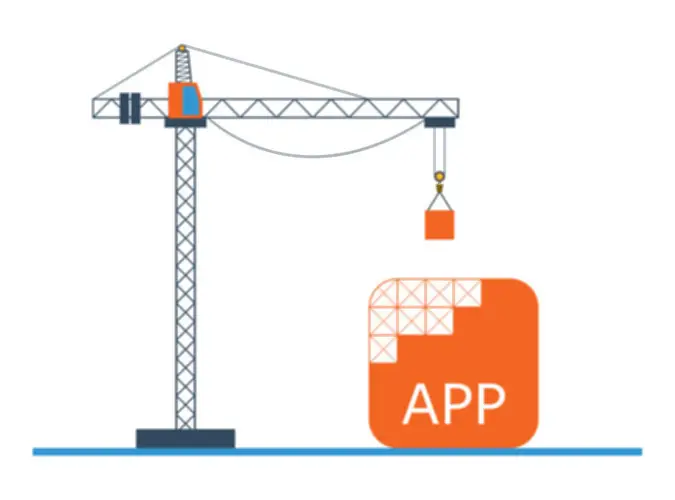Transform Your Business With AI Software Development Solutions https://www.globalcloudteam.com/ — be successful, be the first!
Greatest Practices For Microservices
User interactions and queries are exchanged in accordance with underlying utility and enterprise logic, which dictate database entry, knowledge processing and how results are returned to the consumer. No monolithic application exists or runs without dependencies — it is simply that many of the utility’s particular “work” is performed inside a single software program entity. Microservices, or microservices structure, is an strategy to the design and implementation of enterprise applications by which a large utility is built from modular elements or providers. Each element service in a microservices structure can be developed, deployed, operated, and scaled without affecting the functioning of different providers. Services don’t need to share any of their code or implementation with different What is Microservices Architecture services. Any communication between individual elements occurs through well-defined APIs.

Api & Microservices Security Redefined: Past Gateways & Service Mesh Boundaries
Containers additionally allow platform interoperability without compromising on microservice independence. Deploying microservices separately saves time during coordination with a number of groups whereas endeavor common upgrade or maintenance efforts. Doing so also prevents specific services from using an unreasonably large amount of assets, which might otherwise influence Data as a Product the operations of other services.
Advanced Subjects In Microservices
Containers mean that you only need one software to deploy multiple microservices; as long as the microservice is in a container, the container knows what to do with it and the means to run it. Because microservices are individual, separate companies, builders can scale important companies without having to scale the complete software. Because microservices have both a smaller codebase and a extra narrow scope, developers can shortly deploy new options and functionality.
How Does Microservices Architecture Work?
But there are some challenges you possibly can face if microservice architecture was not used. In this article, you will come throughout some of the major challenges you can face if microservice structure was not used while implementation. Let’s take a look at those challenges and likewise find out about microservice architecture in depth. Together, these technologies streamline constructing and working microservices methods. Messaging techniques like Kafka can be utilized for event-driven, asynchronous communication. In layman’s phrases, microservices aim to break down advanced software methods into simpler, modular elements that work together.
A microservices application could be designed and assembled to perform lots of the same jobs beforehand performed by monolithic utility designs. In a microservices architecture, an software is split into distinct duties and companies. Each task or service is created independently, and each one runs a singular process and often manages its personal database. A service can generate alerts, log knowledge, assist user interfaces (UIs), handle consumer identification or authentication, and carry out numerous different computing and processing duties.
This article covers the definition, examples, and architecture of microservices and lays down a quantity of finest practices for implementing them in 2022. Discover how cloud-native approaches, such as Kubernetes and microservices, improve the resilience of IBM z/OS purposes. Learn about integration patterns and methods that optimize z/OS efficiency for hybrid cloud environments. Many microservices implementations nonetheless adhere to, and are hampered by, legacy design patterns.
With monolithic architectures, all processes are tightly coupled and run as a single service. This signifies that if one process of the appliance experiences a spike in demand, the entire architecture have to be scaled. Adding or improving a monolithic application’s features turns into extra complicated because the code base grows. This complexity limits experimentation and makes it troublesome to implement new ideas. Monolithic architectures add threat for utility availability as a outcome of many dependent and tightly coupled processes enhance the influence of a single process failure. While microservices aren’t exclusive to a cloud surroundings, they are often used collectively.
If one step fails, compensating actions are taken to reverse the previous steps. This way, you maintain data consistency across the system, even in the face of failures. Imagine a circuit breaker in your home that stops electrical energy move when there’s an overload. Similarly, this pattern helps protect your system from cascading failures.
- Now what occurs is your Spring Boot or any utility that can’t principally deal with lots and heaps of load coming into this module.
- Monitoring events permit organizations to arrive at helpful conclusions about knowledge and consumer behavior.
- Because microservices can be individually deployed and scaled, they maximize the profit of cloud computing’s pay-only-for-what-you-use infrastructure — decreasing costs throughout the board.
- Doing so will enable you to create a robust microservices architectural framework the place each service is managed independently whereas working cohesively with other companies by way of a service mesh.
It also incorporates an enterprise-grade Linux working system, for greater security across your whole cluster. Microservices refer to a method of application architecture the place a set of unbiased providers talk via light-weight APIs.Think of your final visit to an internet retailer. Maybe you additionally saw recommendations for associated products—or added an merchandise to your on-line shopping cart. Add all those microservices collectively and you’ve got a fully-functioning utility.
Typical utility end-to-end testing is lower than best for microservices, so discover different options. Test providers as individual subsystems, with cloning or simulation to deal with any dependencies or related services. Contract testing scans how software underneath take a look at makes use of an API, after which creates tests based mostly on that usage.
Create microservices as stateless entities that might be stopped, restarted, patched and scaled — all with out disrupting different services or the general application. Designs that enable extreme dependencies, such as shared data stores, between services can flip a planned microservices structure right into a distributed monolithic one. The SOA mannequin works finest for providers which are largely transactional and reusable throughout large software techniques. SOA is not as well suited to new or refactored code, or projects that involve fast and steady improvement and deployment cycles — that is where microservices shine. Event-driven design allows for asynchronous response to changes, decoupling parts and enhancing scalability. Message queues or event streaming platforms like Apache Kafka or AWS EventBridge enable providers to communicate in an asynchronous way, introducing natural back-pressure mechanisms that allow horizontal scaling.

With the proliferation of providers and containers, orchestrating and managing large groups of containers rapidly became one of many crucial challenges. Kubernetes, an open supply container orchestration platform, has emerged as one of the popular orchestration solutions because it does that job so properly. Without documentation, onboarding new staff members or troubleshooting issues is painfully gradual and riddled with errors.

NoSQL databases like MongoDB and Cassandra provide horizontal scaling capabilities. Relational databases like Postgres proceed to evolve with support for JSON and horizontal scaling methods. The alternative of database applied sciences in accordance with the traits of a particular workload ensures scalability with out added complexity. Microservice structure lets you construct an environment friendly software in a short duration.
By contrast, in a monolithic structure, functionality throughout the software is tightly intertwined with all different processes. Everything runs as a single service — which implies that the entire architecture have to be up to date when a change needs to be made. Because every little thing is intertwined and connected, it’s difficult for builders to easily and quickly implement new options or performance, limiting innovation. If one a part of the monolithic architecture breaks, there’s a great probability the whole system will come to a halt, as all parts are tightly-coupled. Secondly, and perhaps extra importantly, one other primary benefit of microservices is that every individual element can undertake the stack greatest suited to its particular job.
Containers are separated from the rest of the software surrounding them, and many containers could be employed in the same environment. In a microservices structure, every service is individually containerized beneath the same surroundings, similar to the identical or associated servers. Monolithic functions are thought-about all-in-one entities the place the whole software is constructed, tested and deployed as a single codebase. Users access the appliance by way of the client-side application interface or presentation layer.

